
The FA Cup Final was played at Stamford Bridge one three occasions more than one hundred years ago.
Stamford Bridge has been home to Chelsea Football Club since 1905.

The FA Cup Final was played at Stamford Bridge one three occasions more than one hundred years ago.
Stamford Bridge has been home to Chelsea Football Club since 1905.
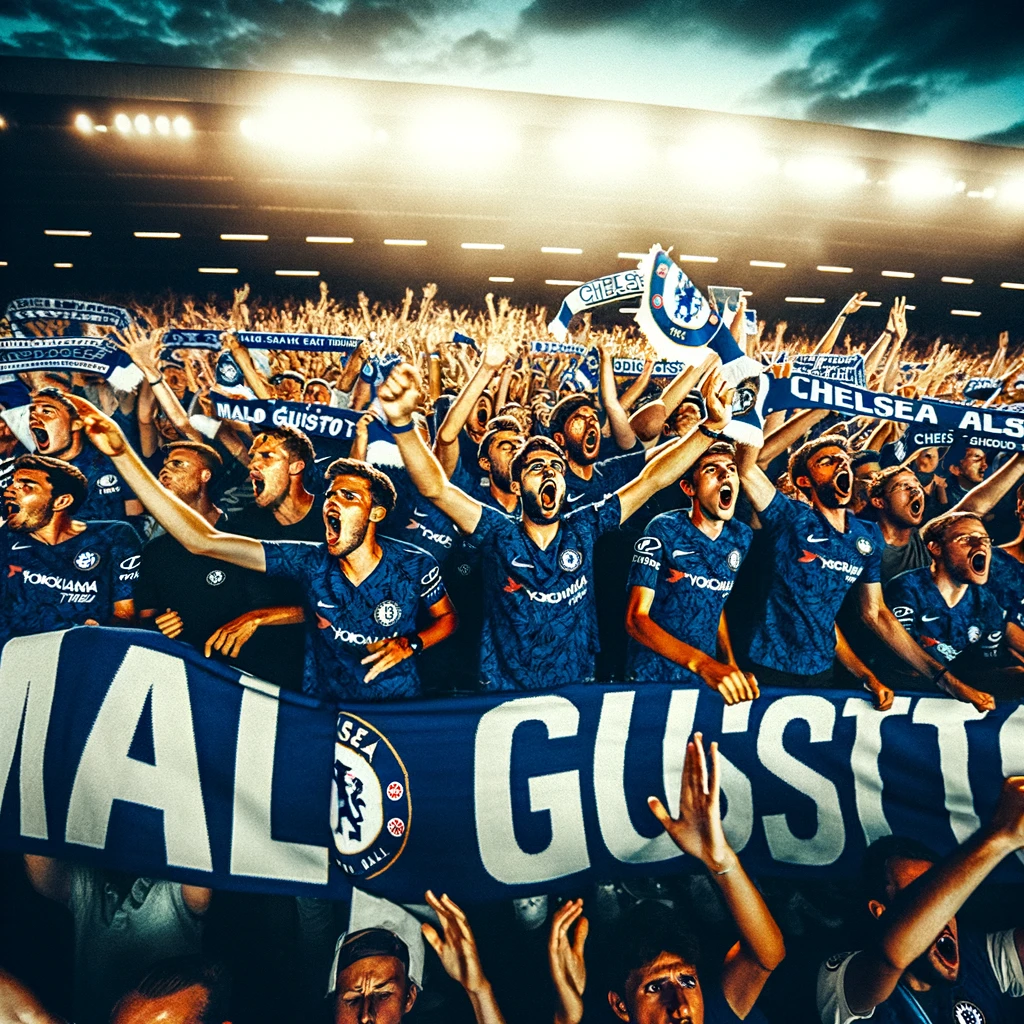
Chelsea fans started a Malo Gusto chant for the first time during Chelsea’s 2-2 draw against Brentford.
It wasn’t just the goals from Nicolas Jackson and Axel Disasi that captured the attention of the Blues’ supporters. Instead, it was the performance of right-back Malo Gusto that resonated with the fans at the Gtech Community Stadium. For the first time, the name “Malo Gusto” was chanted by the away supporters, a simple yet significant gesture of appreciation for the player’s outstanding display on the field.
Malo Gusto played a pivotal role in Chelsea’s performance against Brentford, particularly notable for his brilliant cross that set up Jackson’s goal. Paul Merson described the assist as “unbelievable.” It is his excellent displays in an underperforming team that has led to the Chelsea fans chanting his name, acknowledging Gusto’s contribution to the team.
Chelsea managed to secure a draw in a match that saw them initially take the lead through the efforts of Gusto and Jackson. However, Brentford mounted a comeback in the second half, with goals from Mads Roerslev and Yoane Wissa briefly putting the Bees ahead. It was Axel Disasi’s late header that ultimately helped Chelsea salvage a point from the encounter.
The recognition from the fans comes at a time when Malo Gusto is increasingly proving to be an essential player for Mauricio Pochettino’s Chelsea. His recent performances have been marked by a high level of consistency and quality, demonstrating both defensive prowess and offensive creativity. The chants from the Chelsea supporters are a nod to his excellent form and growing influence within the squad.
The chants for Malo Gusto by the Chelsea fans are a straightforward yet profound acknowledgment of the young player’s contributions and rising stature within the team. It reflects the connection between the players and the supporters, where moments of individual brilliance are celebrated collectively.
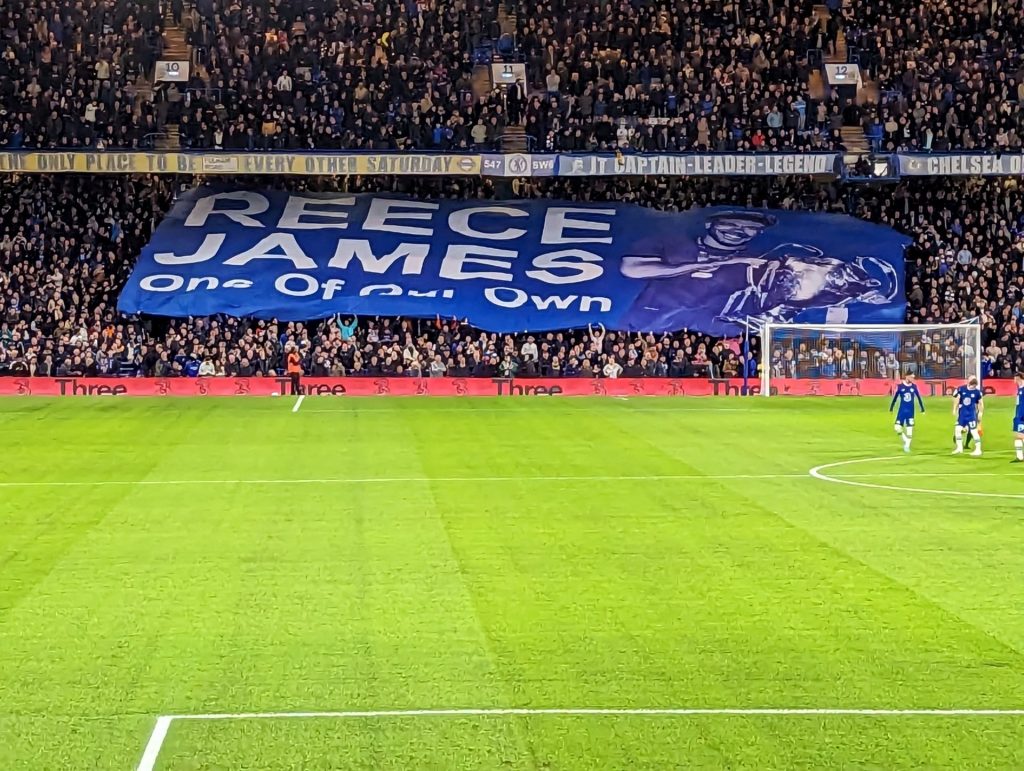
The Reece James’ injury curse frustrates Chelsea fans deprived of seeing one of their own, our captain bring his world class talent to the pitch. Especially as a broader set of chronic injury troubles and poor form beset the club.
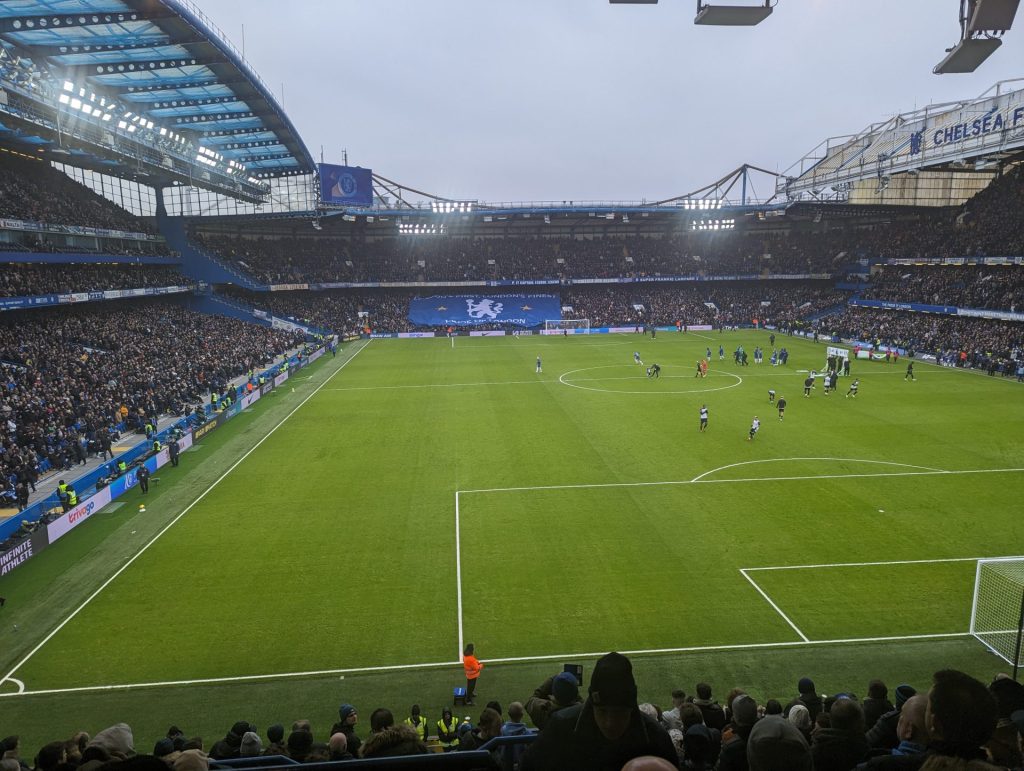
As a passionate Chelsea fan, the question on whether Chelsea should sack Pochettino is becoming unavoidable.
Performances are becoming more tepid by the week and there seems no clear pathway to success, I continue to be seething with frustration and anger over the disastrous state of affairs at our club.
There’s no sugarcoating it anymore: Mauricio Pochettino’s time at Chelsea looks to be going the same way as Graham Potter’s.
We can’t ignore the harsh truth that even if Pochettino departs, the options for a suitable replacement are far from clear. And let’s not forget that the board shares a significant portion of the blame for this debacle.
Chelsea currently wallow in 11th place in the Premier League, a position that is nothing short of humiliating. We’ve suffered a staggering 10 losses, drawn 4 times, and secured a paltry 9 wins out of 23 matches.
This club has had two decades of success, and our current performance is nothing short of a disgrace, the players lack passion and the manager lacks ideas.
It’s déjà vu from a previous season, where we went through three managers. It’s a painful reminder that our problems run deep.
The root of our problems lies in the alarming lack of identity on the pitch. Under Roman Abramovich’s ownership, Chelsea had a distinct style of play that brought us countless trophies.
But thanks to the questionable influence of Todd Boehly, we’re now adrift in a sea of confusion. Frequent managerial changes have left us without a clear vision of how to approach the game. Our attacking tactics are woeful, and we appear utterly clueless in front of the goal.
Defensively, we’ve become an embarrassment. Costly errors have become our trademark, consistently putting us on the back foot. It’s a far cry from the solid defence we once prided ourselves on. Pochettino’s leadership has been a disaster.
Now, let’s not kid ourselves. Even if Pochettino is shown the door, the board’s role in this mess cannot be overlooked. They’re equally culpable for the chaotic state of our club. The fact that suitable replacements for the manager’s role are unclear only underscores the board’s poor decision-making and lack of planning.
Mauricio Pochettino’s recent apology after yet another dismal result was a pathetic sight to behold. It showcased a manager who’s in over his head, but it also highlighted the chaos that the board has allowed to fester.
In conclusion, it’s time for Chelsea to act decisively. Either Pochettino needs to step up, or we need to look at alternatives.
However, we can’t ignore the glaring issue that even if he departs, we’re left with an unclear path for a replacement.
The board must also be held accountable for their role in this debacle. Chelsea deserves better, and it’s time for a major overhaul, even as we grapple with the mess caused by Todd Boehly’s influence. Chelsea fans, it’s time to demand change at every level of the club!
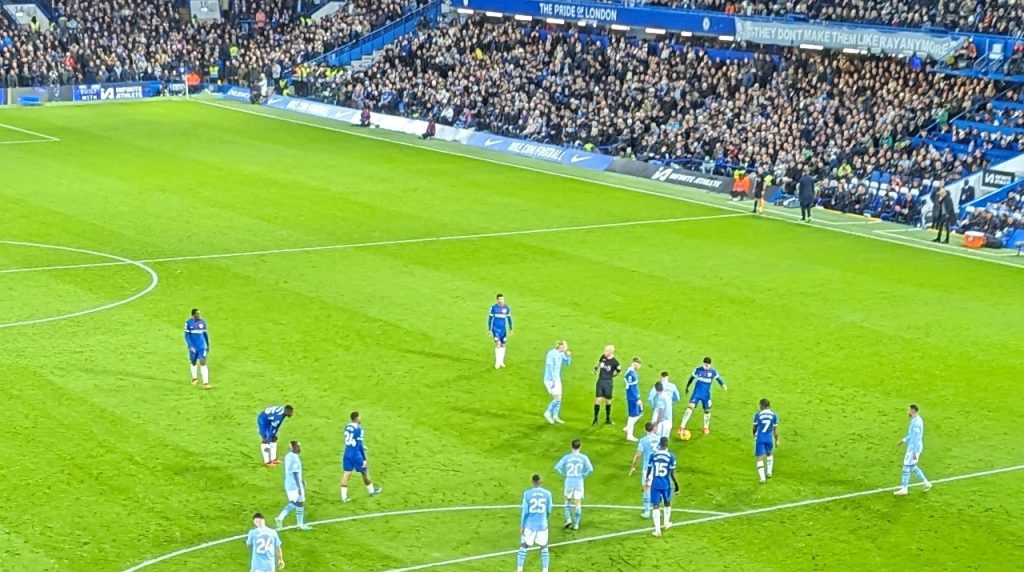
Thiago Silva became Chelsea’s oldest goalscorer at 39 years and 51 days when he headed the Blues first goal in an iconic 4-4 draw against Manchester City at Stamford Bridge.
Thiago Silva’s achievement makes him the fourth oldest player to score in the Premier League, behind Teddy Sheringham, Dean Windass, and Ryan Giggs. He will have to play at least another season to have a chance of beating the 40 years and 251 days set by Teddy Sheringham.
To celebrate his achievement, we have put together a rundown of the five oldest Chelsea goalscorers
5. John Terry (36 Years, 159 Days)
John Terry, made his Chelsea debut in 1998 and left more than 19 years later!
As captain, he led Chelsea to an era of unprecedented success, including multiple Premier League titles, FA Cups, a League Cup, the UEFA Europa League, and the 2012 UEFA Champions League. Renowned as the best defender of his generation with a knack of scoring crucial goals, Terry made over 700 club appearances, epitomizing loyalty and leadership. He left Chelsea in 2017, as the club’s most successful captain.
Aged 36 years and 159 days, Terry’s goal against Watford in his penultimate game at the club in 2017 was a great sendoff to a stunning career at Stamford Bridge where he won it all!
4. Mal Donaghy (36 Years, 167 Days)
Mal Donaghy, a defender from Northern Ireland, comes next. He is the one player on the list that cannot be classed as a Chelsea legend. Although his goal did come in a scintillating 4-3 victory over Tottenham at Stamford Bridge.
3. Gianfranco Zola (36 Years, 290 Days)
Gianfranco Zola, Chelsea in 1996 and quickly became a fan favourite for his skill and flair. In his seven-year stint, Zola helped the Blues win two FA Cups, a UEFA Cup Winners’ Cup, a UEFA Super Cup, and a League Cup. Renowned for his creative playmaking and free-kick expertise, Zola scored 80 goals in 312 appearances. He departed in 2003, etching his name as a Chelsea legend and one of the Premier League’s most gifted imports.
His final goal at 36 years and 290 days was against Everton in 2003. He left at the end of the season but it was obvious that he still had a couple of years left at the top level.
2. Didier Drogba (37 Years, 49 Days)
Didier Drogba, the Ivorian striker, joined Chelsea in 2004 and rapidly became a key figure in the club’s golden era.
His powerful style and clutch performances led to four Premier League titles, four FA Cups, three League Cups, and a decisive role in Chelsea’s first UEFA Champions League triumph in 2012.
Didier Drogba’s last goal for the club was set to be in the Champions League Final in 2012 when his first spell ended. After time in Turkey he returned to the Bridge under Jose Mourinho for a final swansong. Whilst not as prolific in his second spell he scored is final goal for Chelsea The against Leicester City in 2015.
1. Thiago Silva – The Ageless Warrior (39 Years, 51 Days)*
To Thiago Silva age is just a number, after joining the club in 2020 he has shown consistent age-defying form that has seen him win the Champions League and be voted the club’s Player of The Year Award for 2022-2023.
So far he has made 94 appearances and scored six goals.
Despite his age, Silva’s remarkable ability to perform at the highest level sets him apart. His goal against Manchester City at 39 years and 51 days old wasn’t just a goal; it was a testament to his enduring class and fitness. Silva continues to show the passion of someone twenty years younger.
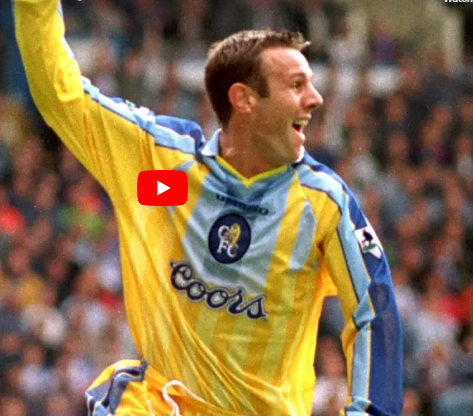
One commentator we will not be looking forward to hearing cover Chelsea games is a former player. Craig Burley hates Chelsea but as a former player broadcasters love to assign him to Chelsea games.
It is natural for commentators, particularly those that are former players to have a certain element of bias.
Gary Neville is never going to get over-excited over a Liverpool goal, and likewise Jamie Carragher probably dies a little inside every time Manchester United win a game. Fans expect commentators to try to be neutral or at least acknowledge their bias.
One commentator who can’t hide his bias is Craig Burley.
He never says this out loud, instead, there is a passive-aggressive comment here, or a negative opinion there meaning that every time he takes up the mic, there’s a collective sigh from Chelsea fans who have grown weary of his antics.
The sad thing as a player he was actually quite popular with fans during his time at the club, but his constant negativity has soured fans’ opinions of him.
Craig Burley played in the 1994 FA Cup Final for Chelsea, as we were crushed by Manchester United.
He was with Chelsea during the 1996/1997 season when Chelsea again reached the final. This time however he was controversially dropped for reasons believed to be linked to his refusal to sign a new contract.and Burley took it badly. Despite Chelsea going on to win the trophy, Burley has not forgotten.
In his own words, he described being dropped as being “smashed by a hammer”
It appears he has never forgiven Chelsea since. Burley was subsequently sold to Celtic before heading into punditry after retiring in 2004.
This now seeps into his commentary, despite him arguably making a living from being an ex-Chelsea player.
It seems unlikely that Burley is going to change his view on the club, so when he is commentating, we will have to just keep ignoring him as much as possible.
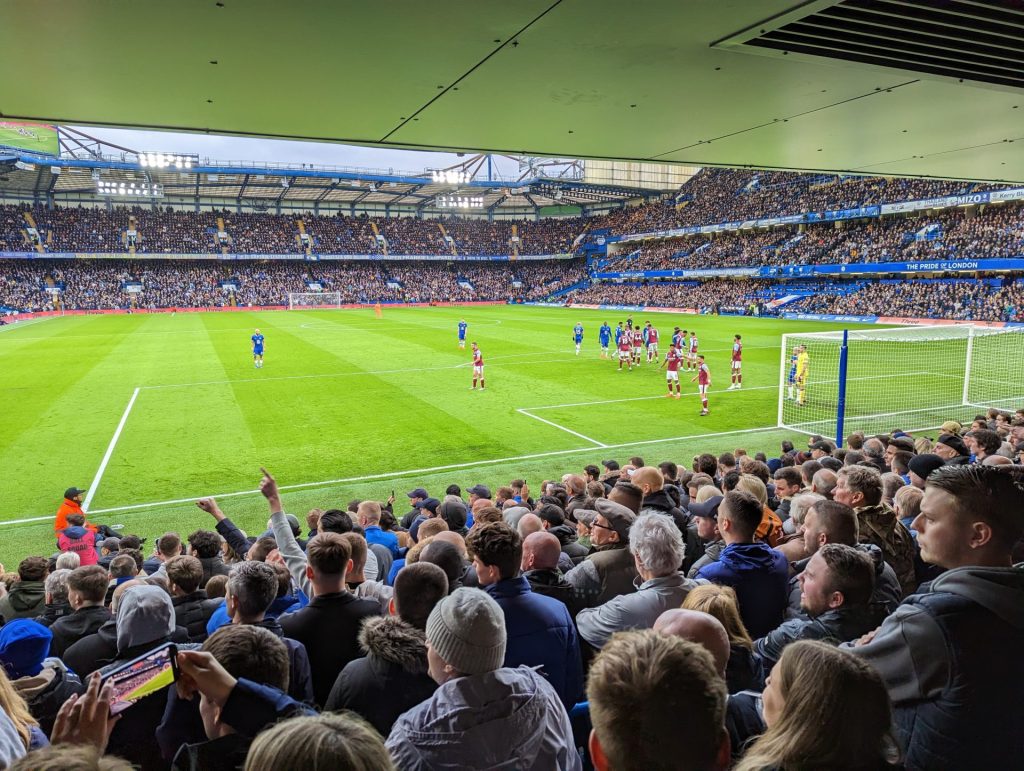
The Chelsea Women’s team demonstrated resilience, skill, and grit to claim the Women’s Super League (WSL) title for an unprecedented fourth consecutive year.
But the journey wasn’t a smooth sail from the get-go. Let’s look at how the Chelsea women turned the tides in their favour, emerging victorious in the 2022/23 season.
The season began with a jolt for Chelsea, as the newly-promoted Liverpool team defeated them 2-1 in the opening match. Chelsea’s grip on the trophy seemed wavering, but this defeat turned out to be an anomaly rather than the norm.
The Blues swiftly regained their footing, starting with an impressive 2-0 win over Manchester City at Kingsmeadow. This match showcased the team’s resilience and ability to bounce back, with goalkeeper Ann-Katrin Berger making a series of remarkable saves. The victory over Manchester City was the first in nine consecutive league victories that quickly overshadowed the early season defeat.
Among these wins, the highlights were a 3-0 win over Tottenham Hotspur in a charged London derby and an 8-0 goal-fest against Leicester City. The winning streak propelled Chelsea back to the top of the WSL table, sending a strong signal to the rivals.
The new year brought a tough challenge against Arsenal at the Emirates Stadium. The match ended in a draw, with Sam Kerr’s 89th-minute equalizer securing a crucial point and maintaining Chelsea’s three-point lead at the top of the table.
However, an unexpected defeat to Manchester City towards the end of March momentarily set Chelsea back to the third position in the league table. But in true Chelsea style, the team bounced back, kickstarting another winning streak with a 3-0 victory over Aston Villa.
Chelsea kept their cool with the title race going down to the wire and continued their winning streak. In the final five matches of the season, the Blues won all, with significant victories over Everton (7-0) and Leicester (6-0).
The penultimate match against Arsenal was particularly emotional as captain Magdalena Eriksson and Pernille Harder bid farewell to Kingsmeadow. But Chelsea celebrated their departure with a 2-0 victory, maintaining their lead at the top of the table.
The title race extended to the season’s final day, but Chelsea Women held their nerve, beating Reading 3-0. This victory cemented Chelsea’s position at the top of the table, clinching the WSL title for the fourth year.
In conclusion, the 2022/23 season was a testament to Chelsea Women’s resilience, adaptability, and never-say-die spirit. Despite the early setbacks, they rose to the challenge, delivering memorable performances and asserting dominance in the Women’s Super League. As the dust settles on yet another successful season, we can’t wait to see what’s next for this remarkable team.
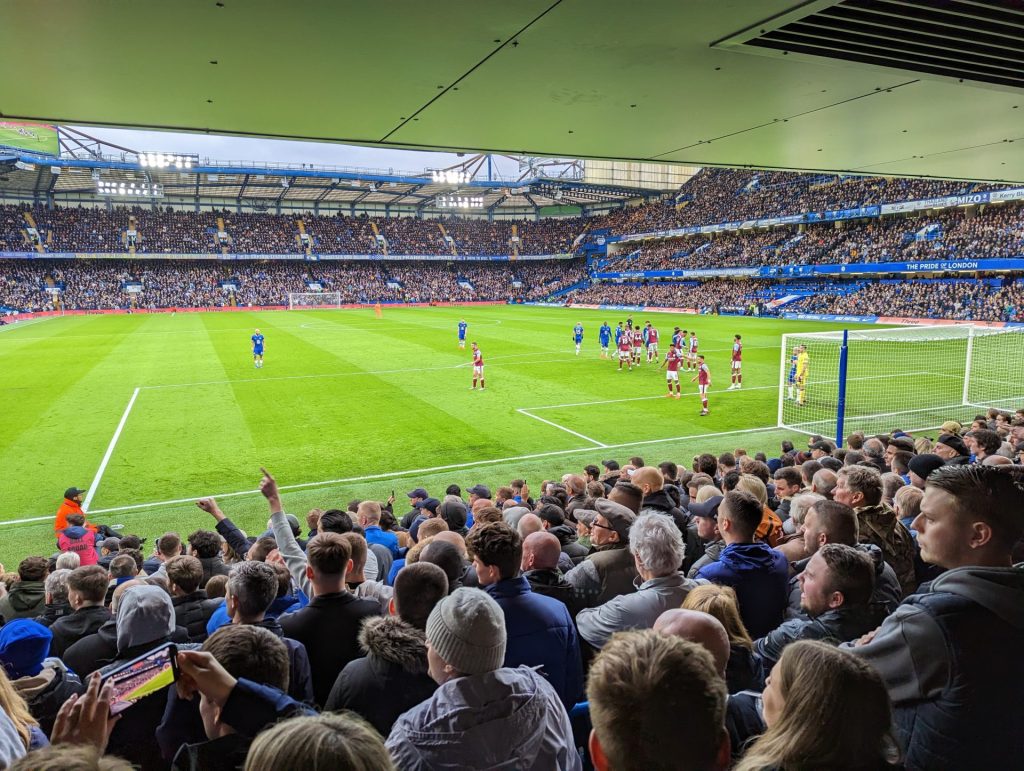
The worst place to sit at Stamford Bridge depends on what you are looking for from a matchday experience, if you want a sedate and luxury matchday then the Matthew Harding and Shed End are probably not for you.
Previously we have looked at the Best Place to sit at Stamford Bridge
Previously we have looked but let’s face it, some spots don’t quite offer the premium experience we seek. Let’s reflect on the less desirable seats to help you make an informed decision.
Undeniably, labelling a spot as the ‘worst’ is largely subjective and depends on personal preferences and what you value most during your visit. Getting Chelsea tickets is hard enough, so just being in the stadium means you have a great view.
Atmosphere
If the raucous energy of a passionate crowd isn’t your cup of tea, then it’s best to avoid the Shed End or Matthew Harding Stand. These areas house the most vocal supporters, and while some fans feed off this energy, it may be too overwhelming for others, who don’t want to hear middle age men swearing at millionaires. 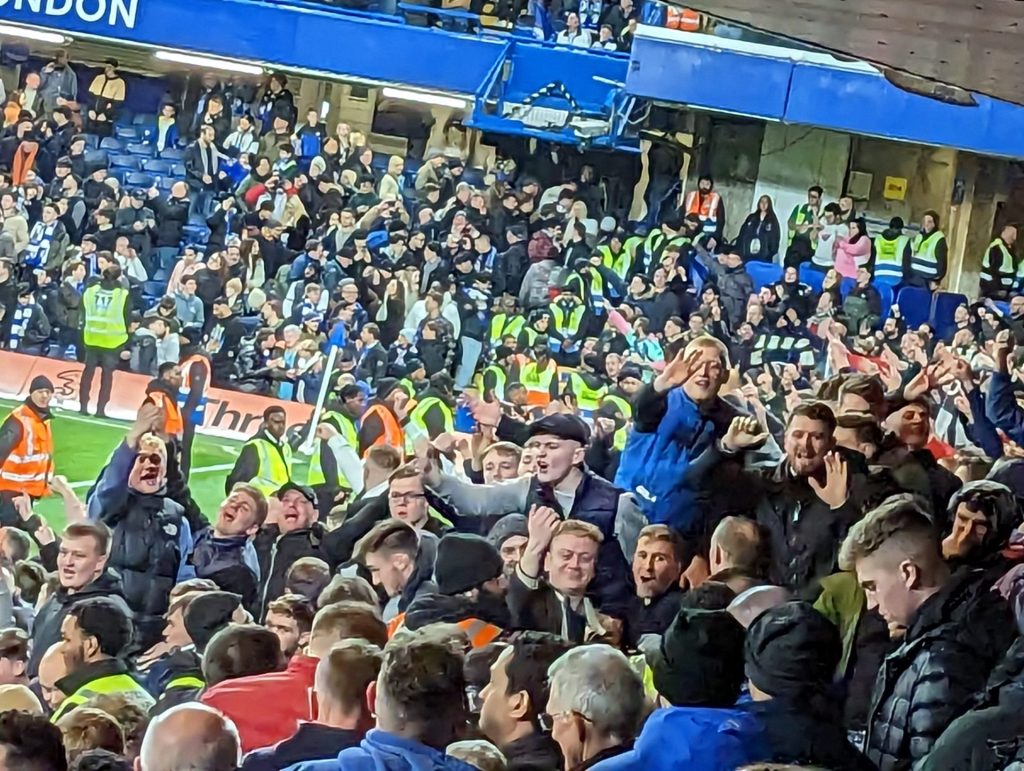
You also have to consider in the Shed End and East Stand the proximity to the away fans, that adds to the atmosphere, but may not be suitable for those with children.
View & Closeness To The Pitch
Interestingly, the seats closest to the action can offer the least desirable views. While you may hear the players’ exchanges and feel immersed in the game, you might find it difficult to follow the action, particularly when play moves to the far end of the pitch.
Sitting or Standing
After lots of campaigning, “safe standing” is now at the Matthew Harding and Shed End’s of the ground. This is great for fans that love the atmosphere, but those that struggle to stand for large periods may find it uncomfortable as although you have a seat you won’t be able to see much as everyone around you will be standing.
Restricted View
There are tickets in some areas where your view of the pitch will not be great and your ticket may be marked “restricted view” so these seats are less reliable.
Comfort & Hospitality
While the West Stand Upper offers heated seating and padding for comfort, the premium services come at a cost. If you’re budget-conscious and prefer a standard, no-frills game experience, these plush accommodations might not be worth their higher price tag.
Cost
The West Stand, known for its stellar views, also carries the heftiest ticket prices. If you’re watching your budget, you might want to consider seats in other areas of the stadium that offer more affordability.
While we’ve covered almost every stand, the East Stand warrants a mention. It’s home to the press, the family section, and the oldest, three-tiered stand at Stamford Bridge. But compared to the energetic atmosphere of the Shed End or Matthew Harding and the luxury of the West Stand, the East Stand might seem somewhat bland.
The ‘worst’ place to sit at Stamford Bridge is a matter of perspective. If the passionate energy of the crowd overwhelms you, or if you value a wide-angle view of the pitch over closeness to the action, then the Shed End or Matthew Harding may not be for you. Similarly, if you’re cautious about costs, you might want to avoid the plush West Stand. Lastly, while rich in history, the East Stand may not offer the excitement or luxury of the other stands.
In the end, wherever you decide to sit, the thrill of watching the Blues in action remains unbeatable! We look forward to seeing you back in the stands soon!
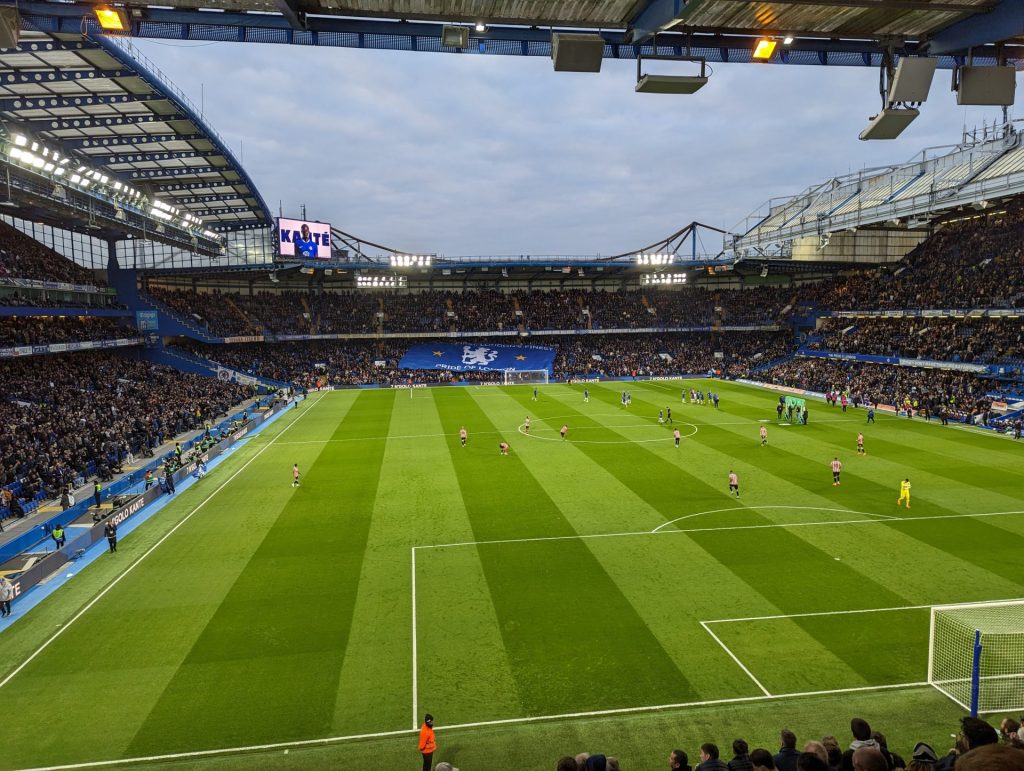
Understanding the Chelsea ticket categories and pricing is crucial when planning to catch a game at Stamford Bridge. The popularity and demand of the matches often determine the Chelsea Premier League match categories.
If a game is a high category, it will be harder to get tickets, whereas lower ticket categories may be easier to make happen.
You also want to consider the best places to sit at Stamford Bridge.
Primarily, the match categories can be divided into three parts – Category AA, Category A, and Category B.
These are usually matches with the highest demand. This category often includes matches against top teams such as Manchester United, Liverpool, Arsenal, and local derbies like against Tottenham. Due to their high demand and popularity, these matches have the highest ticket prices.
Trying to get tickets for these games can be tough, even for members, so consider this if planning your first trip to Stamford Bridge.
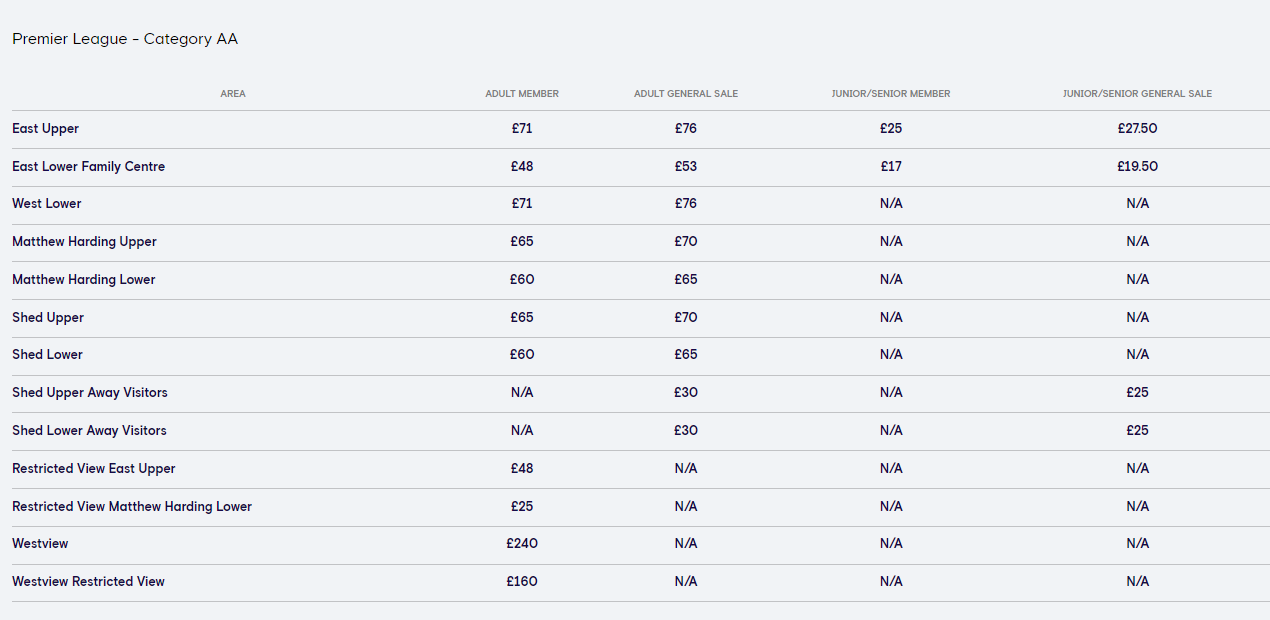 Category A
Category AThese matches may include contests against teams that are not traditionally considered top-tier but still attract significant fan attention. Matches against teams like Everton, Leicester City, or West Ham may fall into this category. The ticket prices for these matches are slightly lower than those for Category AA matches.
This category includes matches against teams that traditionally attract less fan attention. These could be matches against newly promoted teams or teams lower down in the Premier League table. The ticket prices for these matches are usually the cheapest among the three categories.
It’s essential to note that while these categories provide a general guideline, the categorization of matches can vary based on various factors. These can include the importance of the match in the context of the league table, historical rivalries, and more.
Understanding these categories can significantly aid in planning your visit to Stamford Bridge. With this knowledge, you can balance your budget while also experiencing some of the most exciting matches in one of the best football leagues in the world.
Whether you want to witness a high-octane match between Chelsea and Manchester United or prefer a low-key yet thrilling match against a newly promoted team, this categorization system ensures you know what to expect when purchasing your tickets.
So next time you plan to cheer for the Blues at Stamford Bridge, consider these match categories to make the best decision for an unforgettable football experience.
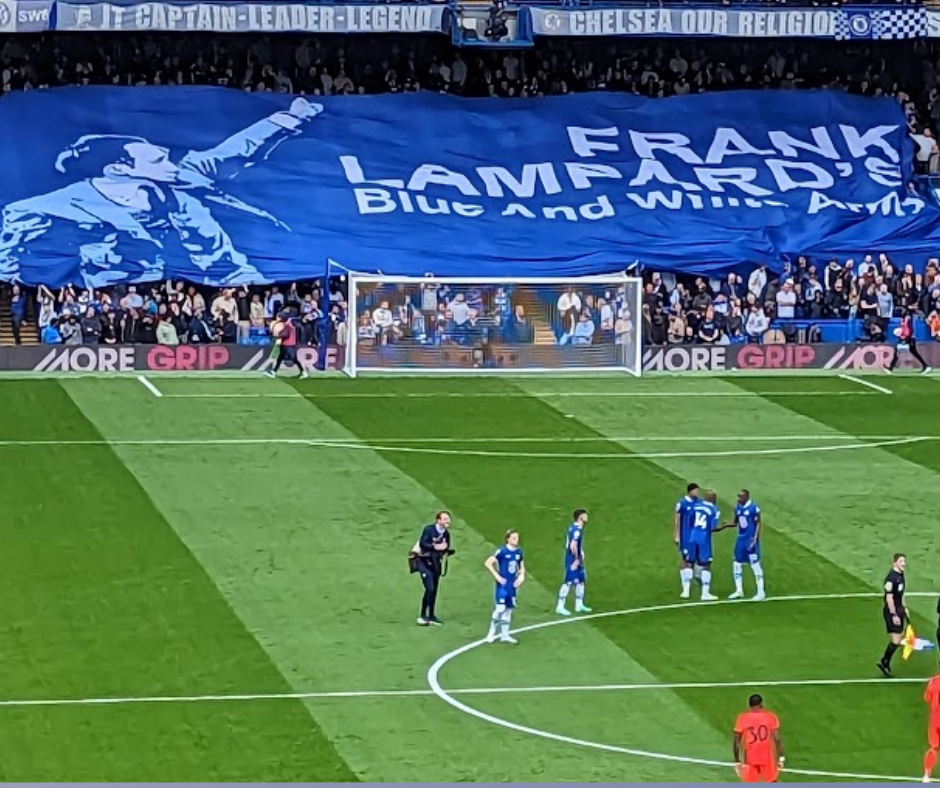
Frank Lampard vs Graham Potter is a debate that will make Chelsea fans rage.
But for the sake of argument, let’s compare the two managers
Frank Lampard, a Chelsea legend as a player, faced considerable challenges as a manager despite an encouraging start. Graham Potter, lauded for his modern and tactically progressive approach at Brighton, found transitioning his strategies to Chelsea’s star-studded squad more challenging than expected. As we dissect their tenures, we will consider their handling of squad dynamics, tactical implementations, achievements, and their overall impact on the club.
This exploration isn’t intended to tarnish their contributions or capabilities as football managers but rather to analyse their respective tenures at Chelsea objectively. It’s important to remember that leading a club as massive as Chelsea is daunting, where pressures are immense, and the margin for error is slim.
Given the circumstances, this analysis mostly ignores Lampard’s second spell in charge.
Frank Lampard’s reign as Chelsea’s manager brought a sense of hope and excitement to Stamford Bridge. As a club legend and one of the most successful midfielders in the club’s history, fans and players met his appointment with enthusiasm. However, despite a promising start, his tenure was marred by issues that led to his dismissal just 18 months into the job.
Lampard’s tenure started impressively, considering the challenging circumstances he found himself in. In his first season, he guided the club to a fourth-place finish in the Premier League and reached the FA Cup final despite the club’s transfer ban.
His commitment to promoting youth was widely praised, with players like Mason Mount, Tammy Abraham, and Reece James emerging as key figures in the team. Lampard’s ability to nurture young talent was undoubtedly a standout aspect of his managerial tenure.
However, despite this promising start, Lampard’s time at the helm was not without its issues. Expectations were high after a significant investment in the transfer market ahead of his second season. Yet, Chelsea underperformed, with disappointing results leading to his dismissal.
Lampard struggled to integrate the new signings into the team effectively, with big-name arrivals like Timo Werner and Kai Havertz failing to hit their strides under his management. Moreover, Lampard’s tactical approach was often questioned, with critics suggesting that his team lacked a clear playing style.
The pressures at Chelsea and the high expectations placed on Lampard eventually led to his downfall. His dismissal, although shocking considering his status as a club legend, seemed inevitable given the poor run of form and mounting criticism.
Comparing Lampard’s reign with Potter’s is not straightforward, as both faced unique challenges and pressures. While Lampard struggled with incorporating new signings and delivering consistent results, Potter struggled to manage inherited problems and implement a new tactical philosophy. However, both managers’ reigns ended with Chelsea in a precarious position, leading to their early departures.
Graham Potter’s management at Chelsea was initially seen as a promising prospect. Coming from Brighton, he brought a unique approach and a reputation for playing attractive, possession-based football. However, his time at Stamford Bridge was marred by a distinct lack of success, leading many to question if he was the worst manager the club had ever had.
Potter’s tenure began with a tumultuous inheritance from Thomas Tuchel. Despite Tuchel’s Champions League triumph, his reign ended with a startling decline in defensive solidity and a series of discord with key forwards. As a result, when Potter stepped in, he was faced with an uphill battle in restoring order and harmony within the squad.
Potter’s tactical philosophy starkly contrasted with Tuchel’s defensive approach, which initially won him some support among fans and players alike. He introduced a new playing style aiming for fluidity and dominance in possession, a refreshing change to the somewhat restrictive gameplay under Tuchel.
However, his strategies did not translate into the anticipated success. Chelsea’s performance under Potter’s management was consistently inconsistent, with impressive victories marred by unexpected defeats. This inconsistency was further highlighted by a weak defensive line, resulting in a string of disappointing results.
The lack of improvement in the team’s performance under Potter’s leadership ultimately led to his dismissal, a mere 18 months after his arrival. Despite his initial promise and differing approach, his inability to effectively manage Chelsea’s plethora of talent and execute a successful strategic plan led many to view his tenure as the worst in Chelsea’s history.
While Potter’s managerial stint at Chelsea was undoubtedly difficult for the club, is it fair to deem him the worst manager in the club’s history? The next section will compare Frank Lampard’s reign, evaluating the different challenges each manager faced and their respective impacts on the club.
Given all the factors discussed above, it is difficult to label either Frank Lampard or Graham Potter as the worst manager in Chelsea’s history. However, several key points can be considered to deliver a fair assessment.
Lampard, a club legend, favored an attacking style of play and gave opportunities to several young players from the club’s academy. His tactics were often viewed as naive, and he struggled with consistency, especially in the second season. Despite these drawbacks, he led the team to a top-four finish and the FA Cup final in his first season.
On the other hand, Potter, renowned for his modern approach and possession-based style of play, struggled to implement his tactics successfully at Chelsea. Despite showing initial promise, his tenure saw Chelsea slide into the bottom half of the Premier League table and early exits from cup competitions.
Lampard’s transfer ban in his first season meant he had limited options. However, in his second season, despite significant investment in players like Timo Werner, Kai Havertz, and Ben Chilwell, Lampard struggled to get the best out of his squad.
Potter, taking over after Tuchel’s dismissal, inherited a team that had recently seen significant investment. However, his inability to extract the best from these players was evident, and a lack of squad harmony was a recurring theme during his tenure.
Frank Lampard’s legacy as a player at Chelsea is unquestionable. As a manager, despite a turbulent second season, he brought through promising young talents such as Mason Mount and Reece James and maintained a good rapport with fans throughout his tenure.
Graham Potter, while having a strong reputation before his Chelsea tenure, struggled to win over the Chelsea fanbase. The team’s performances under him, combined with an apparent disconnect between his style of play and the squad’s capabilities, led to his dismissal after a disappointing season.
Considering the performances, tactics, squad management, and overall impact on the club, Frank Lampard’s tenure, while not without its challenges, showed promise and left a lasting legacy. However, Graham Potter’s reign was marked by significant underperformance given the resources at his disposal, leading to a downturn in Chelsea’s fortunes.
While it is challenging to label either as the “worst” manager, based on the evidence provided, Graham Potter’s tenure was arguably more damaging to Chelsea in the short term. Regardless, both managers’ tenures underline the pressures and demands of managing a club of Chelsea’s stature, and the inherent challenges that come with it.